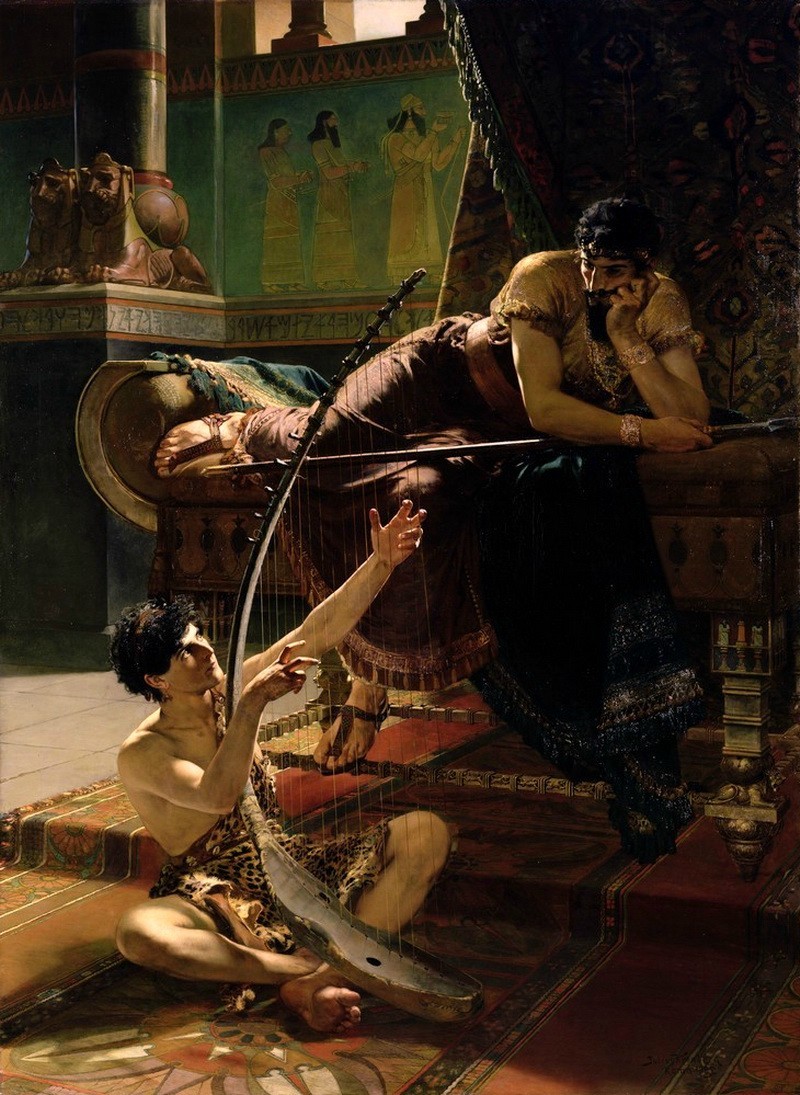David and Saul by Julius Kronberg, 1 Samuel 16:14-23, Bible.Gallery
Artwork Description

The painting 'David and Saul' offers a captivating glimpse into a pivotal moment in biblical history, meticulously brought to life with an astonishing attention to detail. The canvas portrays the iconic relationship between King Saul and the young David, who would eventually ascend to the throne. A recurring theme from the Hebrew Bible, this particular scene depicts David using his musical talents to soothe the troubled Saul.
[Artist's Name] masterfully infuses the painting with sensuality and rich color palettes, evoking an ambiance that could be reminiscent of a harem. It's easy to understand why Stephen saw this portrayal as a testament to the close relationship between the two men. However, one cannot help but wonder if Saul, in his regal splendor, could have foreseen the future where David would replace him as king.
The artist's choice of colors elegantly reflects the opulence of Saul's reign and the grandeur of his palace. The lyre, showcased with intricate precision, practically invites viewers to reach out and pluck its strings. The motif adorning the palace's back wall exudes an intriguing Persian influence, possibly a reflection of the prevailing fashion of the era in which the painting is set.
The painting faithfully follows the biblical account, depicting Saul as a handsome figure while presenting David as a youthful character. The use of lighting, cascading from the upper left window, beautifully accentuates the scene. The lion-adorned column stands as a symbol of royalty, strength, and grace, further enhancing the regal atmosphere.
The two figures are locked in a moment of profound companionship, seemingly oblivious to the weighty roles history would assign them. Even the finely detailed rug adorning the stone floor is a testament to the enduring appeal of certain decorative styles, transcending the boundaries of time. In 'David and Saul,' weaves a harmonious tapestry of aesthetics, history, and the timeless interplay of human relationships, offering a unique visual journey into biblical lore.